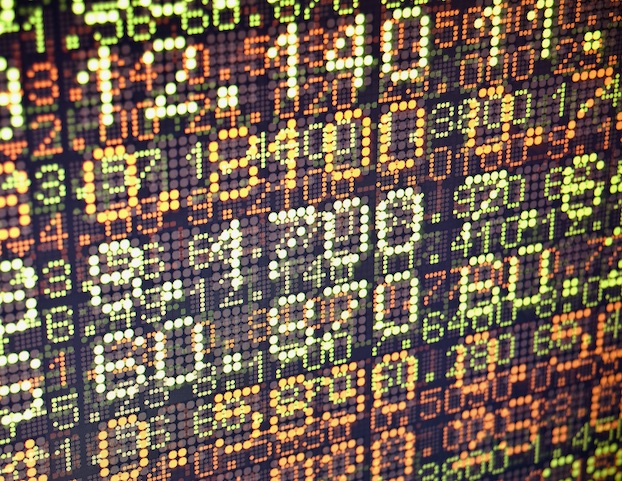Stock markets fall worldwide as Trump’s ‘Liberation Day’ approaches
Published 10:52 am Monday, March 31, 2025

- (Metro Creative Services)
President Donald Trump’s “Liberation Day” is fast approaching, and stock markets from Wall Street to Wellington, New Zealand, are falling Monday in advance of it.
In New York, the S&P 500 was down 0.6% following one of its worst losses of the past couple of years on Friday. It’s on track to finish the first three months of the year with a loss of nearly 6%, which could make this its worst quarter in nearly three years.
The index had been down as much as 1.7%, but it pared its loss as the morning progressed. The Dow Jones Industrial Average completely erased its early drop and was up 43 points, or 0.1%, as of 11:30 a.m. Eastern time. But sharp slides for Tesla, Nvidia and other influential Big Tech stocks had the Nasdaq composite down 1.6%.
Trending
The U.S. stock market’s swings followed a sell-off that spanned the world earlier Monday as worries build that tariffs coming Wednesday from Trump will worsen inflation and grind down growth for economies. Trump has said he’s plowing ahead in part because he wants more manufacturing jobs back in the United States.
In Japan, the Nikkei 225 index dropped 4%. South Korea’s Kospi sank 3%, and France’s CAC 40 fell 1.6%. In New Zealand, the NZX 50 slipped a more modest 0.1%.
Instead of stocks, which can be some of the riskiest possible investments, prices strengthened for things considered safer bets when the economy is looking shaky. Gold rose again to briefly crest $3,160 per ounce.
Prices for Treasury bonds also climbed, which in turn sent their yields down. The yield on the 10-year Treasury fell to 4.22% from 4.27% late Friday and from roughly 4.80% in January. It’s been falling as worries build about tariffs.
On Wednesday, the United States is set to begin what Trump calls “reciprocal” tariffs, which will be tailored to match what he sees is the burden each country places on his, including things like value-added taxes. Much is still unknown, including exactly what the U.S. government will do on “Liberation Day.”
At Goldman Sachs, economists expect Trump to announce an average 15% reciprocal tariff. They also raised their forecast for inflation and lowered it for U.S. economic growth for the end of the year.
Trending
Altogether, they now see a 35% chance of recession in the next year, up from an earlier forecast of 20%, “reflecting our lower growth forecast, falling confidence, and statements from White House officials indicating willingness to tolerate economic pain,” according to Goldman Sachs economist David Mericle.
If the April 2 tariffs end up being less onerous than investors fear — maybe Trump includes no additional tariff increases on China, for example — stocks could rally. But if they end up being a worst-case scenario, which also gets businesses so fearful that they start cutting their workforces, something that hasn’t happened so far, stocks could sink much further.
Of course, there’s also the chance that April 2 does little to clear the uncertainty. It could end up being merely a “stepping stone for further negotiations” instead of a big “clearing event” for the market, according to Michael Wilson and other strategists at Morgan Stanley.
“This means policy uncertainty and growth risks are likely to persist — it’s a question of to what degree,” Wilson wrote in a report.
One worry is that even if Trump’s tariffs end up being less harsh than feared, all the uncertainty created by them could alone cause U.S. households and businesses to freeze their spending, which would hurt an economy that had been running at a solid pace at the close of last year.
Either way, some familiar names were leading the way downward on Wall Street Monday.
Tesla fell 4.7% to bring its loss for the year so far to 37.8%. It’s been one of the worst performers in the S&P 500 so far this year in large part because of fears that the electric-vehicle maker’s brand has become too intertwined with its CEO, Elon Musk.
Musk has been leading U.S. government efforts to cut spending, making him a target of growing political anger, and protests have been swarming Tesla showrooms as a result.
It’s a sharp drop-off following a surge of roughly 90% in the weeks following November’s Election Day, when the thought was that Musk’s close relationship with Trump could help the company’s finances. Tesla’s stock is roughly back to where it was on Nov. 5.





